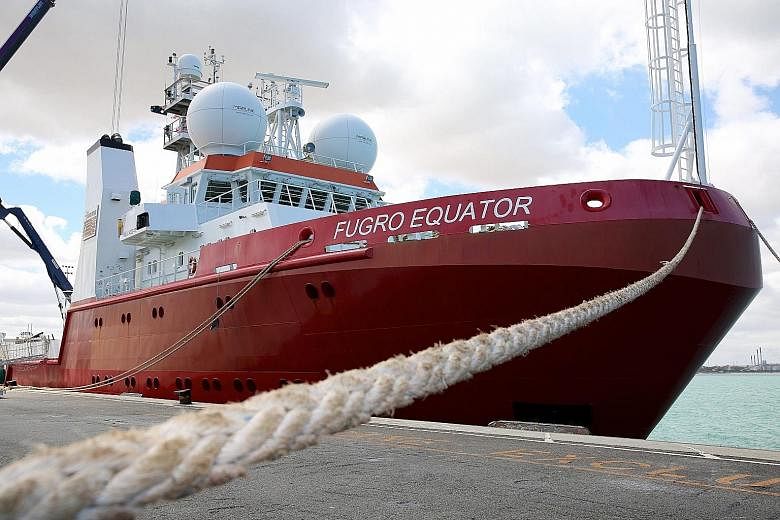It cost A$200 million (S$215 million) - and ended in apparent failure - but experts say the two-year search for the missing Malaysia Airlines MH370 aircraft was not in vain.
According to marine scientists, the 120,000 sq km search for the Boeing 777 has produced an unequalled trove of vital information about the world deep beneath the ocean's surface.
The information, which could take years to analyse, will assist with tsunami warnings and shipping charts, and is set to drastically improve our understanding of ocean currents, marine biology and the history of the formation of the planet.
Marine geologist Robin Beaman, a research fellow at James Cook University, said the amount of data collected was "globally unprecedented". It includes detailed maps and imagery of parts of the sea floor in the Indian Ocean that are more than 5,000m deep.
"There is nowhere on earth that has had such a large amount of modern technology applied to it," he told The Straits Times.
"You can see detail that has never been revealed before - the volcanoes, the faults that formed as the ocean's crust developed over time. From a scientific perspective, it is astounding."
The agency overseeing the search, the Australian Transport Safety Bureau (ATSB), confirmed that the data collected will be made publicly available. A spokesman said the data will first be processed by Geoscience Australia, a national science agency, and will then be released in phases for free download on its website.
"A vast amount of data has been collected throughout the search," the spokesman said.
This huge amount of ocean data was collected during two separate phases of the search operation.
The first phase came soon after the disappearance of the plane, which vanished during a routine flight from Kuala Lumpur to Beijing in March 2014.
From May to December 2014, A$20 million was spent on an operation to map the southern Indian Ocean where analysis of satellite contacts suggested it crashed.
This bathymetric survey was necessary because so little was known about this remote stretch of water. It produced high-resolution imagery, modelling and maps, including information on water depth and hardness of the sea floor.
Further data was collected during the more costly next phase from October 2014: an extensive underwater hunt involving vessels equipped with side-scan sonars to survey the seabed. This phase officially ended on Monday when the last search vessel arrived back in Western Australia.
Asked how much area was covered, the ATSB spokesman said: "We are still reviewing all the data, but including the coverage that was gathered during the vessels' transit to and from the search area, over 700,000 sq km."
Dr Beaman said previous mapping of the world's oceans has largely focused on areas where there are tectonic activity and earthquakes, but not across large basins.
"This will help us get a better understanding of the underwater landscape of our earth and how our landscape is preserved," he said.
"It all goes to understanding how the sea floor has changed over time. How did the underwater landscape come to form? Why are there so many volcanoes scattered there? How much sediment develops over the years? What is living down there?
"There will be uses that we haven't even thought of yet."
The underwater search uncovered old shipwrecks and extensively mapped the sea floor around Broken Ridge, a mountainous structure along the margin between two geological plates.
Dr Beaman predicted that the data will prove useful for many years. "It comes off the back of a great tragedy but the data is very valuable for basic understanding of the world," he said.

